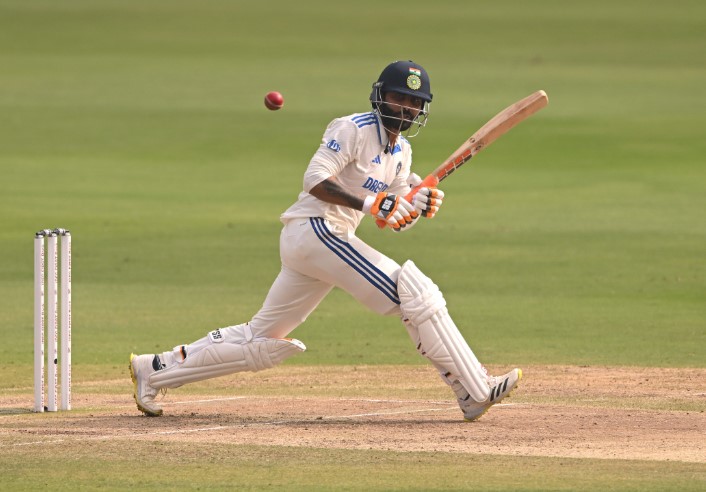Cricket Rules: Cricket, a sport with a rich history, has evolved significantly since its inception. From its early days in rural England to becoming one of the most popular sports globally, cricket has undergone numerous rule changes. These changes have not only made the game more exciting and inclusive but have also improved fairness, player safety, and the spectator experience. This article explores some of the most notable rule changes in cricket over the years.
Cricket Rules: Origins Of Cricket And Early Rules

Cricket Rules: Cricket originated in England during the 16th century, though the rules were not formalized until much later. The first known rules of cricket were recorded in the 1740s. Early cricket was a much different game than what we see today, and many of the rules we take for granted were either nonexistent or very different.
Length of the Game: Initially, cricket matches could go on for days, sometimes lasting up to three or more days, with no fixed number of overs.
Batting Style: The bat used in early cricket resembled a hockey stick rather than the modern straight-edged bat.
Cricket Rules: The early years of cricket were marked by confusion over boundaries, equipment, and formats. In 1744, the first known written rule of cricket appeared, which stated that the match could be won by a side either “first scoring 15 notches, or who had most notches when the game is ended.”
The Advent Of Overs
Cricket Rules: One of the most significant evolutions in cricket came with the introduction of “overs.” Early cricket matches did not have the concept of overs, and the game was played in an undetermined number of balls. In the 19th century, the introduction of overs changed the structure of the game.
The Overs Era:
Early Overs: The first formal rule of an “over” was introduced in 1775, with the understanding that the bowler would deliver six balls before changing sides. However, this number was not universally agreed upon until later years.

Six Balls in an Over: It wasn’t until the mid-19th century that the six-ball over became standard across most playing conditions.
| Time Period | Overs per Over | Changes to Overs |
|---|---|---|
| 1775 | 4 balls per over | Standardization of overs began |
| 1864 | 6 balls per over | Became universal |
Cricket Rules: The six-ball over helped standardize the game and made it more predictable. This became one of the cornerstones of modern cricket.
The Introduction Of Limited Overs Cricket
Cricket Rules: While Test cricket, a format that could last up to five days, remained the norm for much of the 20th century, there was growing demand for shorter, more action-packed formats. This led to the advent of Limited Overs Cricket, which would eventually lead to the development of formats like One Day International (ODI) and Twenty20 (T20).
One-Day Internationals (ODIs)
1971: The first-ever One-Day International (ODI) was played between England and Australia. The initial format consisted of 60 overs per side, and the match was completed in a single day.
1980s: The popularity of the ODI format grew, especially after the success of the 1983 Cricket World Cup, which helped cement the ODI format’s place in global cricket.
Twenty20 (T20) Cricket
2003: The T20 format was introduced in England for domestic cricket. The idea was to reduce the game length even further to attract a broader audience, especially for evening matches.
2005: The first official T20 World Cup was held, marking the rise of the shortest format in cricket.
| Format | Year Introduced | Overs per Side | Global Impact |
|---|---|---|---|
| Test Cricket | 1877 | Unlimited | Longest and most prestigious format |
| ODIs | 1971 | 60 overs per side | Increased global following |
| T20s | 2005 | 20 overs per side | Revolutionized the game, attracting new audiences |

Cricket Rules: The introduction of limited overs cricket revolutionized the sport by making it more accessible to fans and sponsors. The creation of the IPL in 2008 took T20 cricket to new heights and became one of the most lucrative cricket tournaments.
The LBW (Leg Before Wicket) Rule
Cricket Rules: The LBW rule has evolved over time to ensure fairness for both the bowler and the batsman. The earliest mention of the LBW rule can be traced to the 17th century when the rule was vague and subject to different interpretations.
1744: The initial rule stated that a batsman could be out if the ball hit his leg and was on its way to the stumps.
1800s: The rule was formalized to allow LBW decisions only if the ball would have hit the stumps after hitting the batsman’s legs.
Cricket Rules: One of the more significant changes came with the introduction of technology in decision-making, specifically Hawk-Eye, to determine whether the ball would have hit the stumps. This change, introduced in the early 2000s, ensured more accurate decision-making.
The Introduction Of Protective Equipment
Cricket Rules: In the early days of cricket, there was little to no emphasis on protective gear. Players, especially batsmen, were vulnerable to injury due to the hard ball and lack of protection. The introduction of protective gear has been one of the most important evolutions in the sport.
1870s: The first gloves were introduced to protect the hands.
1970s: Helmets became standard after the tragic injury to Australian cricketer Phillip Hughes, who was hit on the head by a bouncer in 2014.

The Role Of Technology And Umpiring Innovations
Cricket Rules: Technology has transformed cricket umpiring. In the early days, decisions were left entirely to the umpires’ judgment, and there was no recourse for players who felt they had been wronged. However, with advancements in technology, decisions can now be reviewed.
Key Technological Innovations:
Third Umpire: Introduced in 1992, the third umpire assists the on-field umpires by reviewing decisions using video replays.
Decision Review System (DRS): Introduced in 2008, the DRS uses technology like Hawk-Eye, UltraEdge, and ball-tracking to assist in making more accurate decisions.
| Technology | Introduced | Function |
|---|---|---|
| Third Umpire | 1992 | Video review for on-field umpires |
| DRS | 2008 | Reviews based on Hawk-Eye, UltraEdge, and ball tracking |
Impact Of Gender Equality
One of the most important rule changes in recent years is the growing emphasis on gender equality in cricket. Women’s cricket has grown exponentially, and there has been a push for parity in playing conditions, tournament structures, and prize money.
Equal Prize Money: Since 2017, the ICC Women’s Cricket World Cup has had equal prize money to the men’s equivalent.
T20 Leagues: The introduction of T20 leagues for women, such as the Women’s Big Bash League (WBBL) and The Hundred, has opened up new opportunities for female cricketers.

Cricket has undergone a remarkable transformation over the centuries, from a leisurely pastime to a global spectacle. The evolution of its rules has been crucial in making the game fairer, faster, and safer, while also enhancing its appeal to a wider audience. Whether through the introduction of overs, the creation of limited-overs formats, or technological innovations, cricket continues to evolve. As the sport grows, further changes and improvements will undoubtedly follow, ensuring that cricket remains a dynamic and exciting game for future generations.
